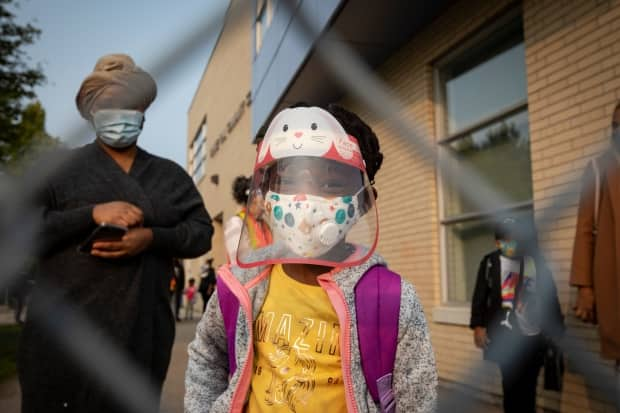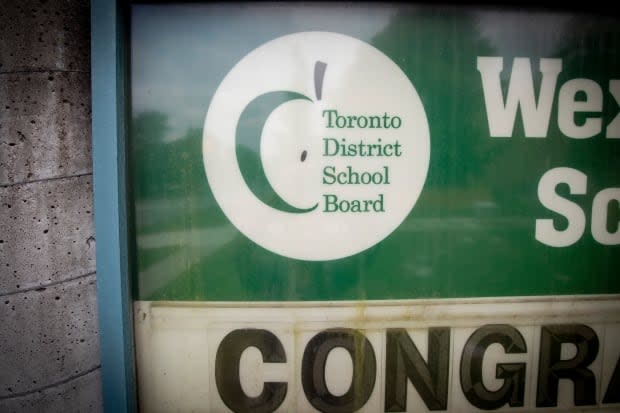Want safe classrooms in September? Get the ventilation right, experts say

Tiffany Thornton wants her kids back in class this coming September, but concerns over classroom ventilation and how that could affect COVID-19 transmission have her seriously considering keeping her youngest son in daycare instead of moving him into junior kindergarten.
Like many others, Thornton says pandemic parenting has "drained" her at this point — juggling full-time work and online schooling for her son in Grade 4, who has been learning at home for months (Premier Doug Ford most recently ruled out a June return, citing the risk of causing thousands of new COVID-19 cases).
Now, with the Delta variant of the novel coronavirus circulating and her boys still too young to be vaccinated, Thornton is wondering if their classroom will be safe when the fall arrives. The Mississauga school where her sons go is old (her colleagues, in their 50s, remember going there) and Thornton said she's heard nothing from the Peel District School Board about its plans to improve air flow in classrooms.
"It's a concern, all the time," she said. "It has been since registering him for kindergarten. It has been since September last year."
This should be the last full week of class for Ontario students, but now, with kids still out of school buildings, it's also the beginning of a countdown to September. The lingering questions: will GTA schools be able to improve their ventilation systems to limit the spread of the virus? And will parents like Thornton be willing to take that risk?
CBC Toronto asked every GTA school board where things stand when it comes to improving their facilities. What we found is that different boards are taking different approaches, and almost every board is still working on improvements. Here's a look at what three of the largest are doing:
Peel District School Board: The Peel board says it has upgraded all of its air filters to MERV13 (a high-end filter used in hospital settings) and is operating ventilation systems for longer periods of time. The board has also purchased 1,140 of what it calls "stand-alone ventilation/filtration units" to use in classrooms and portables where the only airflow comes from doors and windows.
Toronto District School Board: Canada's largest school board says it has HEPA (high-efficiency) filters in all classrooms, portables and wellness rooms. Since last August, the board has upgraded some 451 schools to add full or partial mechanical ventilation, but at least 58 schools still rely on windows. The board says there are 170 ventilation projects approved for this summer with many being carried out in aging buildings.
York Region District School Board: York's board says most of its schools have mechanical ventilation and upgraded filters, and it's also put in automated systems that it says flush the buildings with fresh air each morning. About 15 per cent of schools still rely on windows, the board says, and in those facilities the standard practice is to keep windows open.
The GTA's other school boards all reported similar efforts to bolster ventilation, especially in classrooms without HVAC systems.
Those classrooms, said Dr. David Fisman, an epidemiologist with the University of Toronto's Dalla Lana School of Public Health, are the ones parents should be most concerned about.
"You do have some fraction of our schools that don't have any mechanical ventilation at all — poorly ventilated spaces," he said. "If we don't improve ventilation, we're not taking advantage of the ability to get infectious material out of the air that people are going to breathe in."
Fisman says the best defence for teachers and students is to get vaccinated against COVID-19, but even though vaccine guidance may change in the coming months many children likely won't have that ability.

Parents of those children will want to find out about specific classrooms, Fisman says. "Has the ventilation in the building actually been assessed recently? What's the nature of your system? Are there are there areas within the school that are more risky than others?"
It's not just Ontario schools that are trying to do more when it comes to ventilation. The U.S. Centers for Disease Control and Prevention puts ventilation among its main recommendations for the school system.
"Bring in as much outdoor air as possible," it states, adding the air that's in schools should be filtered as much as possible while exhaust fans in bathrooms and kitchens should also be running. School bus windows should also be open, it says, even if only a crack due to safety reasons.
Schools need to identify problem spots, expert urges
David Elfstrom, an Ontario engineer who has been tracking this issue since last August, says Toronto's school boards have been good at using government funding to bolster ventilation, but he says there's still work to be done when it comes to identifying the worst spaces in schools and closing them down — especially in newer and older parts of the facility.
"It shouldn't be luck for students to end up in a new portable with a dedicated ventilation system versus an old classroom without any mechanical ventilation," he said in an email. "That's not equitable."

As for monitoring, boards like Halton Catholic have installed devices to check air quality at 25 schools, while others like the Toronto District School Board say they do testing when an issue arises.
Combined, the school boards reported spending millions on the upgrades.
Here's what other GTA boards say they're doing
Toronto Catholic District School Board: Schools with mechanical ventilation have been given upgraded MERV filters, while 5,500 portable HEPA filter units have been installed in classrooms without.
Durham Catholic District School Board: Durham's Catholic board says it has sent 680 HEPA systems to its 38 elementary schools.
York Catholic District School Board: The board says all 101 of its schools have had ventilation system upgrades in line with the Ontario government's guidelines. "Almost half of them will receive additional upgrades this summer," the board said in an email.
Halton District School Board: The board is running its ventilation systems with MERV filters and are running them for longer. "We have supplemented ventilation at 35 of our schools with air purification systems," it said.
Halton Catholic District School Board: The board said all of its schools have mechanical ventilation.
Dufferin-Peel Catholic District School Board: The board also has mechanical ventilation in all of its schools, leaving none reliant on natural ventilation as the main source for fresh air supply, it said.

 Yahoo Finance
Yahoo Finance 